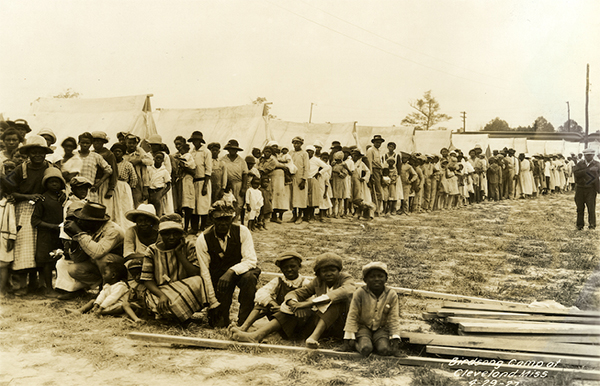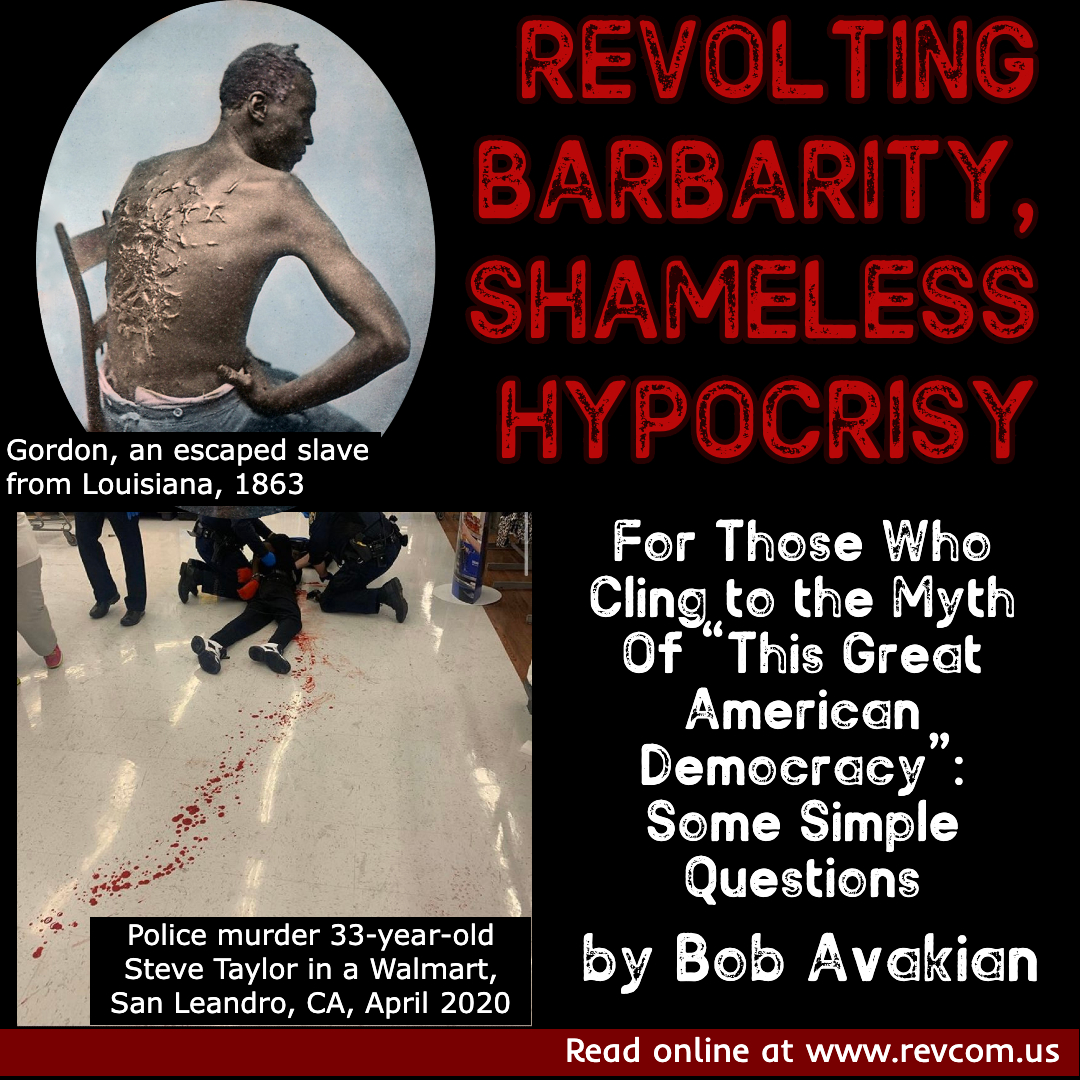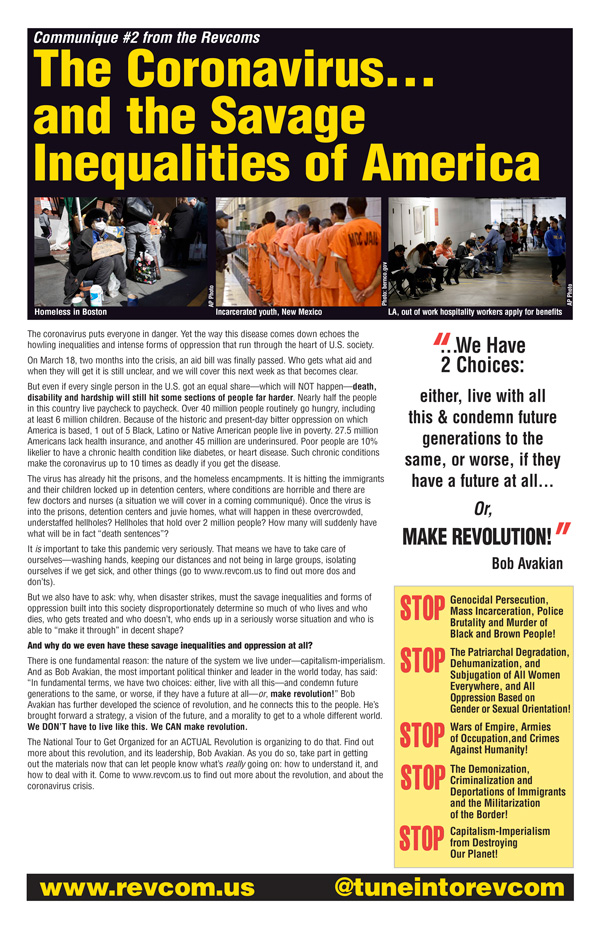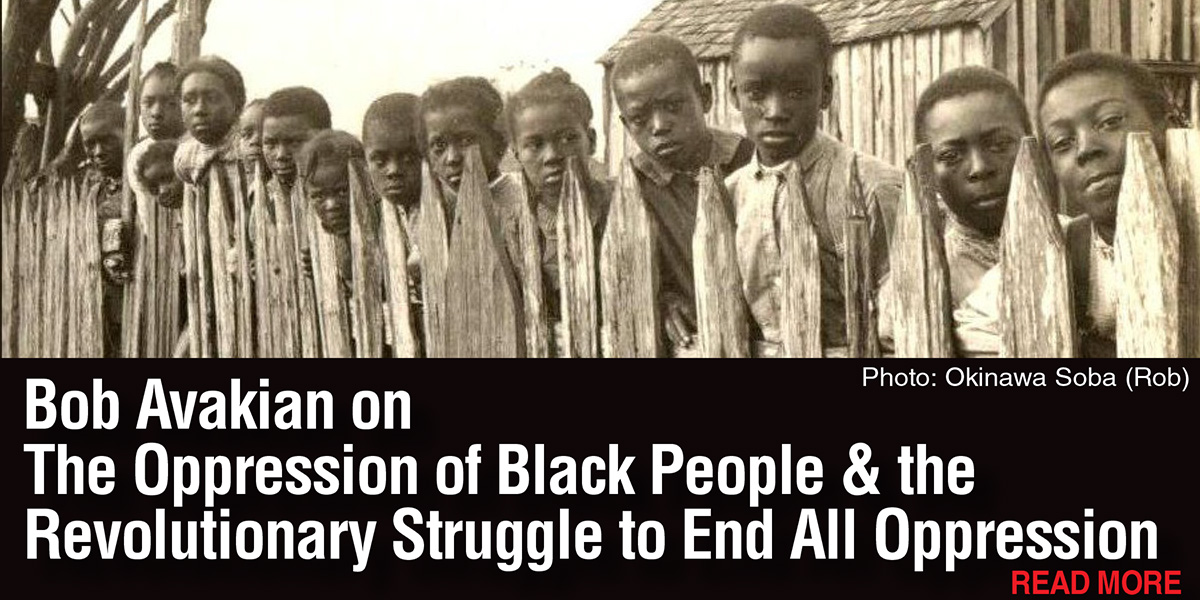From 1927 Mississippi Flood Disaster to COVID-19 Pandemic Today:
Savage Inequalities Echo Through the Decades
| revcom.us
From a reader:
Images of a social crisis caused by a natural disaster—the “pre-existing” inequalities which have been laid bare—has happened before, like during Katrina which a lot of people are familiar with. But there was another natural disaster which both exposed and exacerbated those inequalities in the not so distant past in America—the great flood of 1927.
The Mississippi flood of 1927 was the greatest natural disaster this country has ever known. People can look it up—the record-breaking flooding all along the whole Mississippi Valley from Minnesota to Mississippi and Louisiana at the Gulf of Mexico, the amount of water, the amount of devastation, the human misery and death. I learned a lot of this from reading Rising Tide: The Great Mississippi Flood of 1927 and How it Changed America by John M. Barry. It covers a lot more than just what the people experienced but that is what I want to focus on.
And, if you know anything about this country, its history, or its present, you have no trouble knowing which people “got the dirty end of the stick” as BA says—Black people. This book concentrates on the Mississippi Delta. There were some outrages which occurred during that flood which were particular to the flood, and there were others which were a continuation, or even a throwback, of the particular history of this country and its foundation on slavery. And all too many of the kinds of things which Black people endured during that flood are being echoed today during the COVID-19 pandemic. The forms might be somewhat different, but the relations which allow, and yes, demand, that Black people “stay in their place,” whatever the particulars of that “place” are at any given time, reflect the underlying contradictions of the oppression of Black people in this country.
In 1927 there was a societal sentiment which different sections of people saw very differently, which will be very familiar to people now. During the 1927 flood it was this: “The whites liked to think a flood fight represented the best of the community, all of it pulling together. Instead, it simply reflected the nature of power in the community, shorn of pretense.” (pages 192-193) The reality faced today belies the “We are all in this together” slogan which is constantly repeated by public figures, and wistfully by beleaguered health care and other front-line workers. We might all be facing the same reality of the flood or the pandemic, but the way people experience it, the ways the social relations and the force of law force people to act is very, very different.
There is a grisly image from Rising Tide that I can’t shake and which is particularly gruesome but also concentrates the “nature of power in the community” referred to above. This passage is quoting from the New York Times in 1927: “an engineer who ran out of sandbags ‘ordered...several hundred negroes...to lie down on top of the levee and as close together as possible. The black men obeyed, and although spray frequently dashed over them, they prevented the overflow that might have developed into an ugly crevasse. For an hour and a half this lasted, until the additional sandbags arrived.’” (pages 130-131) Just think about that for a minute—to comment further on this has the potential to render it less profoundly distressing.
It was not just this kind of horrific example which characterized the differences in Black and white people’s experiences. The daily routines for Black and white people during the flood were vastly different. White people were housed in the upper stories of hotels, “people constantly played the piano, sang, and danced. [The hotel] had no trouble getting meat and supplies...” Meanwhile Black neighborhoods were flooded, ruined, devastated. “Tents had finally arrived for shelter and the weather had turned warm, but the tents were not floored and cots had not arrived, so refugees still slept on the wet ground. There were no eating utensils or mess hall. Blacks had to eat with their fingers, standing or squatting on their haunches like animals.” (pages 311-312)
Black men were worked like prisoners on chain gangs. The waters were rushing down the Mississippi River and the levees needed to be shored up. Black men were forced, often at gunpoint, to build the levees for endless hours, often without pay, with inadequate food, beaten by the white overseers. The National Guard companies called in by the state during the flood work “beat black refugees, beat them for back talk, and beat them for trying to leave the camp. Men from these two companies were accused of theft—entering tents at will, interrupting card games, taking all the money—rape, and at least one murder.” (p. 316)
While the Black men were forced to work, Black families were also subjected to dangerous and dehumanizing conditions. “The food blacks received was vastly inferior to that given whites, and not much more than what was needed to stay alive. Canned peaches were sent in; none went to blacks for fear it would ‘spoil’ them.” (p. 313) “Food was given out according to strict criteria: 1. No rations will be issued to Greenville negro women and children unless there is no man in the family, which fact must be certified by a white person. 2. No negro man in Greenville nor their families will be rationed unless the men join the labor gang or are employed. 3. Negro men...drawing a higher wage (than $1 a day) are not entitled to be rationed.” (pages 316-317) Often Black people had to pay for food and clothing that white people were given for free. Again, echoes today with Republican politicians claiming that giving people enough money to survive on will erode their will to work, and continuing to fight to reduce the number of people eligible for food stamps during this pandemic!
“But the most serious grievance penetrated to the soul. The blacks were no longer free. The National Guard patrolled the perimeter of the levee camp with rifles and fixed bayonets. To enter or leave, one needed a pass. They were imprisoned.” (p. 313) This calls to mind when you see videos today of young Black men and women in Brooklyn being beaten by armed pigs for not “socially distancing.” Or seeing a Black jogger being murdered by vigilantes in Georgia because he was in the “wrong neighborhood.” They “crossed the perimeter,” they are no longer free.
Rising Tide goes on to say that this imprisonment “was true in every camp in the state. Mississippi was determined to keep its workers if it required force to do so.” (p. 313) And how is this qualitatively different from ordering the meatpackers to work in sites which are rife with coronavirus infection. The mentality that Black people and other people of color are not actually human beings but just “objects” to be used by those who need their labor lingers in the statement by the judge in Wisconsin who observed that the COVID-19 virus was just spreading among the meatpacking workers, “not regular people.” Note that overwhelmingly these meatpackers are Black and Latino, immigrants and majority women.
After an outright murder of a Black worker by a white pig, and subsequent rumors of unrest, the most prominent white politician and local planter spoke at a Black church. He proceeded to blame Black people for the murder! He claimed that white people have done everything for them, working day and night. “During this all this time you Negroes did nothing, nothing for yourselves or for us... Because of your sinful, shameful laziness, because you refused to work in your own behalf unless you were paid, one of your race has been killed... The murderer is you! Your hands are dripping with blood. Look into each other’s face and see the shame and the fear God set on them. Down on your knees, murderers, and beg your God not to punish you as you deserve.” (p. 334) I found this passage particularly striking in light of the bludgeoning of the Black people with religion, with their God, and the entitlement and self-righteousness from the white politician, not to mention the content of the passage, blaming Black people for the murder of a Black man. All of these messages again, are evident today—Black people aren’t grateful for what white society has done for them, Black people should look to their own sin, Black people should blame themselves for Black people being killed. That direct line between the Confederacy and the fascists of today passed through periods in the history of this country like 1927 in Mississippi.
There are many more examples, and parallels, between Mississippi USA almost 100 years ago and the entire USA today. It is telling that Rising Tide goes on to say many of these examples were in national newspapers in 1927, that some of them even shook white people up, but nothing fundamentally changed. For example, in the wake of the flood a land reform proposal which would have redistributed the land back to small farmers languished. Note that less than 30 years before the flood, two-thirds of the land was owned by Black farmers. Even if that had been allowed to pass, it would have hardly solved the basic contradiction at the root but even that would not be allowed.
Generation after generation of Black people is subjected to the horrors of this putrid and vile society. So how much longer does this have to go on?!?! BA has written extensively, scientifically, and eloquently about the nature of this contradiction, the centrality of it to making revolution and to forging a new society. We have to make sure this pandemic isn’t just something that the fascists seize on to mobilize their forces, to consolidate their power, but that it is a time that all people who yearn for a different world, who crave something positive to come out of this crisis, who hate what is being revealed and exacerbated by the pandemic, dig into BA’s analysis, get with the movement for revolution, prepare for an actual revolution.

The caption to the photo reads: “A group of men await work assignments on the Greenville levee. Tags attached to their collars kept track of inoculations, work assignments, and what plantation they came from. The levee became a work camp, where food and supplies for 50,000 people and thousands of heads of livestock were unloaded for distribution throughout the Delta. Black men were not allowed to leave, they were forced to work without pay.” (Photo: MDAH).

African-American flood refugees wait in line at Birdsong Camp, Cleveland, Mississippi, April 29, 1927. (Photo: Mississippi Department of Archives and History (MDAH)).
See also on The Coronavirus Pandemic — A Resource Page:
“How do the “savage inequalities” of the system play out in the way this virus affects different sections of people? Who does it come down the worse on, and why?”

Get a free email subscription to revcom.us:




